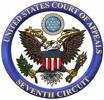Seventh Circuit Week in Review: What If the Sentencing Judge Thinks the Sentence Doesn’t Matter?
 The Seventh Circuit had only one new opinion in a criminal case last week. In United States v. Smith (No. 08-1477), the defendant received a twenty-year sentence for distributing child pornography. On appeal, Smith challenged his sentence on various grounds, including (most notably) a truly remarkable colloquy between his lawyer and the sentencing judge, in which the judge indicated that the Bureau of Prisons had the authority to decide how much of Smith’s sentence would actually be served in prison. If the judge’s comments are taken at face value, then the judge’s understanding of the law was clearly wrong. (The judge was not referring here to the 15-percent reduction in sentence length available for “good time,” but to an alleged authority to release the defendant at “any time” up to the full twenty years.) Such a mistake would betray not only a disconcerting ignorance of the way the federal criminal justice system has operated since parole was abolished in the 1980’s — a full 85 percent of the sentence must now be served as a minimum in all cases — but would also raise questions about whether Smith’s sentence was set unnecessarily high. After all, the judge was apparently operating under the mistaken belief that prison officials could release Smith as soon as he no longer presented a danger to the community — given that premise, it is easy to imagine a judge erring on the side of a more severe sentence.
The Seventh Circuit had only one new opinion in a criminal case last week. In United States v. Smith (No. 08-1477), the defendant received a twenty-year sentence for distributing child pornography. On appeal, Smith challenged his sentence on various grounds, including (most notably) a truly remarkable colloquy between his lawyer and the sentencing judge, in which the judge indicated that the Bureau of Prisons had the authority to decide how much of Smith’s sentence would actually be served in prison. If the judge’s comments are taken at face value, then the judge’s understanding of the law was clearly wrong. (The judge was not referring here to the 15-percent reduction in sentence length available for “good time,” but to an alleged authority to release the defendant at “any time” up to the full twenty years.) Such a mistake would betray not only a disconcerting ignorance of the way the federal criminal justice system has operated since parole was abolished in the 1980’s — a full 85 percent of the sentence must now be served as a minimum in all cases — but would also raise questions about whether Smith’s sentence was set unnecessarily high. After all, the judge was apparently operating under the mistaken belief that prison officials could release Smith as soon as he no longer presented a danger to the community — given that premise, it is easy to imagine a judge erring on the side of a more severe sentence.
The Seventh Circuit (per Judge Manion) nonetheless affirmed.


 The Pirate Bay verdict
The Pirate Bay verdict